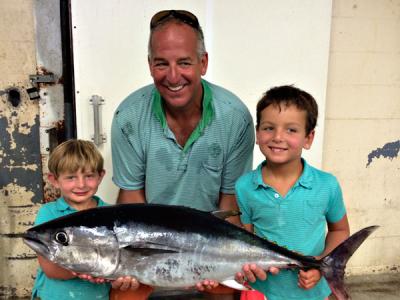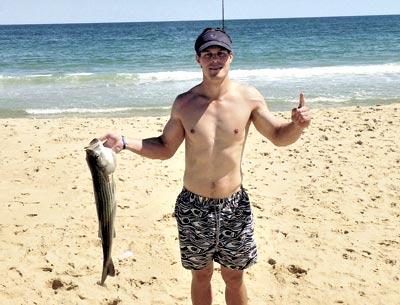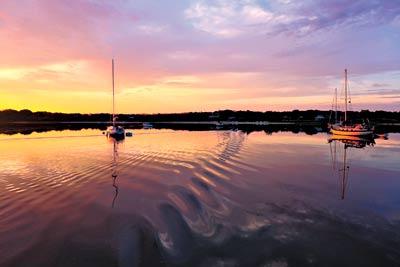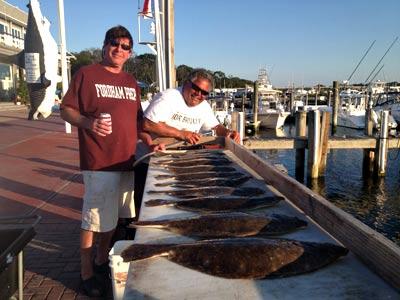Montauk’s Man in the Know
Montauk’s Man in the Know

When I heard the news, I thought of his big laugh, big smile. Then the memories began to flood like the tide around the Montauk Marine Basin docks. Carl Darenberg Jr., “Carly,” was always there, like big Carl senior, and Vivian, his mom.
I knew them slightly before becoming the “On the Water” reporter for The Star in the early 1980s. They were hard people, by which I mean strong, no nonsense, serious about taking care of boats and the needs of fishermen, proud of the marina’s place in the history of big-game fishing in the Northeast. Carl grew up in the middle of it and generously shared his knowledge with this reporter.
In the days before the Star Island Yacht Club, it was the Marine Basin where people went to ogle the sharks caught during the annual tournaments, where at midnight on Aug. 14, 1986, Capt. Frank Mundus brought his 3,450-pound white shark to be weighed, and where the week before the Marine Basin’s scales weighed in a 1,174-pound blue marlin. It was the Marine Basin where you went to see giant bluefin tuna dressed for market. So much history and Carl grew up in the middle of it.
Montauk’s docks are always awash in the latest fish news. There are tuna in the Butterfish Hole, snowshoe flounder south of Block. “Did you hear? So-and-so caught a this-and-that.” Carl heard it all, every day, a walking encyclopedia of fish facts.
Two years ago, he broke with deeply entrenched tradition by pioneering Montauk’s first no-kill shark tournament, and as always took a personal hand in promoting it despite criticism from those who had come to view shark tournaments as an opportunity to gamble big money. Carl recognized the Marine Basin’s role in the Montauk community, not just our boating and fishing community, but in all areas of our day-to-day. He was generous.
The shock of his passing stings all the more coming as it did on the eve of “Tumbleweed Tuesday,” the day after Labor Day, when Montaukers crawl from the wreckage and reunite. I will miss Carl Darenberg.
He knew that mahimahi were being caught within sight of land south of Montauk, and that bigeyes were being found well offshore. He might have heard about the whales and bluefin tuna off Nantucket. It will be left to others to keep the account.
Bluefish, big ones, are reported to be feeding within casting range from Hither Hills to East Hampton. Harvey Bennett of the Tackle Shop in Amagansett reports “red-hot snapper bluefish action” in Accabonac Harbor. He said porgies are big and plentiful on the Cherry Harbor side of Gardiner’s Island. The fluke bite in Gardiner’s Bay has slowed, he said, but striped bass in the 30-pound class have been taken on the ocean side in front of the Maidstone Club in East Hampton — WASPy stripers.
Sammy’s Beach just west of the Three Mile Harbor inlet has small bass and bluefish. Best to find them there in the early morning hours. Over at the Harbor Marina off Gann Road, a snapper derby will happen on Sunday from 10 a.m. to 2 p.m., with weigh-ins at 1:30 and judging at 2. The fee is $5, and the first 30 to enter get a free lure. Categories are ages 3 to 8, 9 to 12, and 13 and up.
False albacore are spotty so far. Schools have been seen around Gardiner’s Island. That will change. Ken Rafferty, a light-spin-tackle and fly-fishing guide from East Hampton, usually moves his operation to Montauk about this time each year to chase the falsies.
He was getting ready to head out on Tuesday morning from Three Mile Harbor. He said that although some false albacore have been taken on the ocean side, the usual strong run in Gardiner’s Bay had not yet developed, although mid-August is when they usually arrive.
In the meantime, Rafferty said his clients have been catching striped bass and big bluefish in Gardiner’s Bay. Brett Davis, a first-time fly fisherman, caught his first striped bass the other day — “a dead-calm day, water like glass, and bluefish finning on the surface.”
I think Carl Darenberg would have liked that description.




